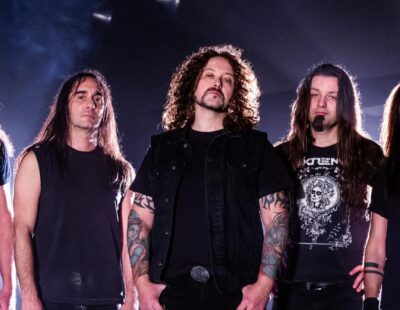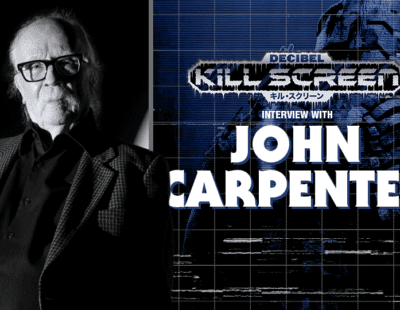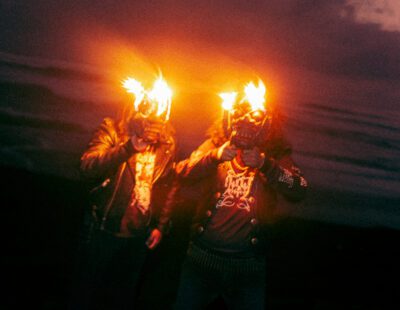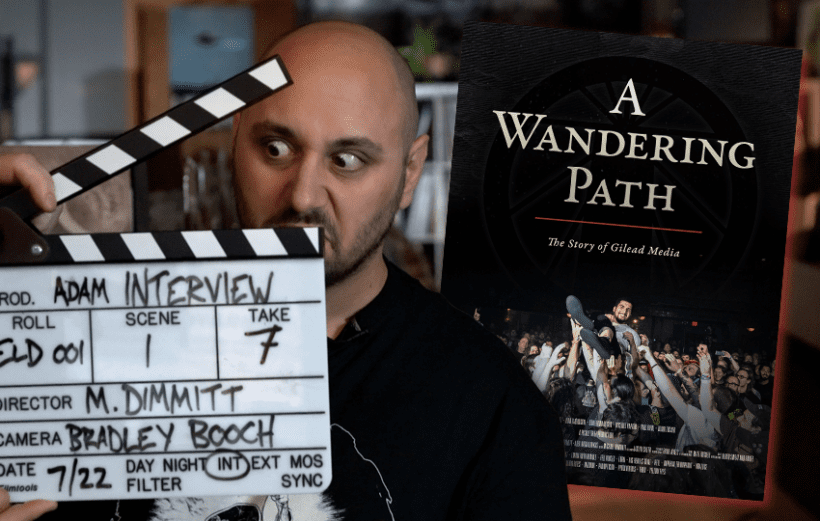
Maybe the most important thing that can be said about Michael Dimmitt’s A Wandering Path: The Story of Gilead Media is that it makes me want to listen to all of the music. When riffs by Louisiana bruisers Thou burst briefly through the speakers, I want nothing more than the hours it would require to sink into that band’s whole discography. I want to hear all of it at a go, to pack it into a singularity of experience as quickly as possible, and at the same time, I want to hang on to each precious second of vocal frisson and tone degradation. Ditto Panopticon. And Yellow Eyes. Mizmor. Krallice. Fórn. Leech. Hell. Cancer Conspiracy. Mutilation Rites. This music matters at an almost anatomical level to its creators, and the empathy on display throughout every interview just hammers home all the reasons it matters to its fans, also.
Filmmaker and guitarist Dimmitt plants his flag of purpose deeply in the opening minutes of the new documentary, which focuses on Adam Bartlett’s Gilead Media record label and the bands in its orbit. This is not a celebration of metal’s excesses, nor a revelry in some kind of communal spirit summoned by music. There is a community here, but it rises laboriously, almost in spite of itself, out of the individuals whose personal burdens would overwhelm them if they didn’t have this music as a life raft. As Nate Myers of Leech and Mania says, there are so few people around where he lives who want to play this kind of music that you either form a bunch of bands with overlapping personnel or you go off and record your own thing. And it’s only through Dimmitt’s extraordinary act of tying all these disparate rafts together, which he and his crew do with graceful transitions and shot choices throughout, that the connection among these artists can be appreciated.
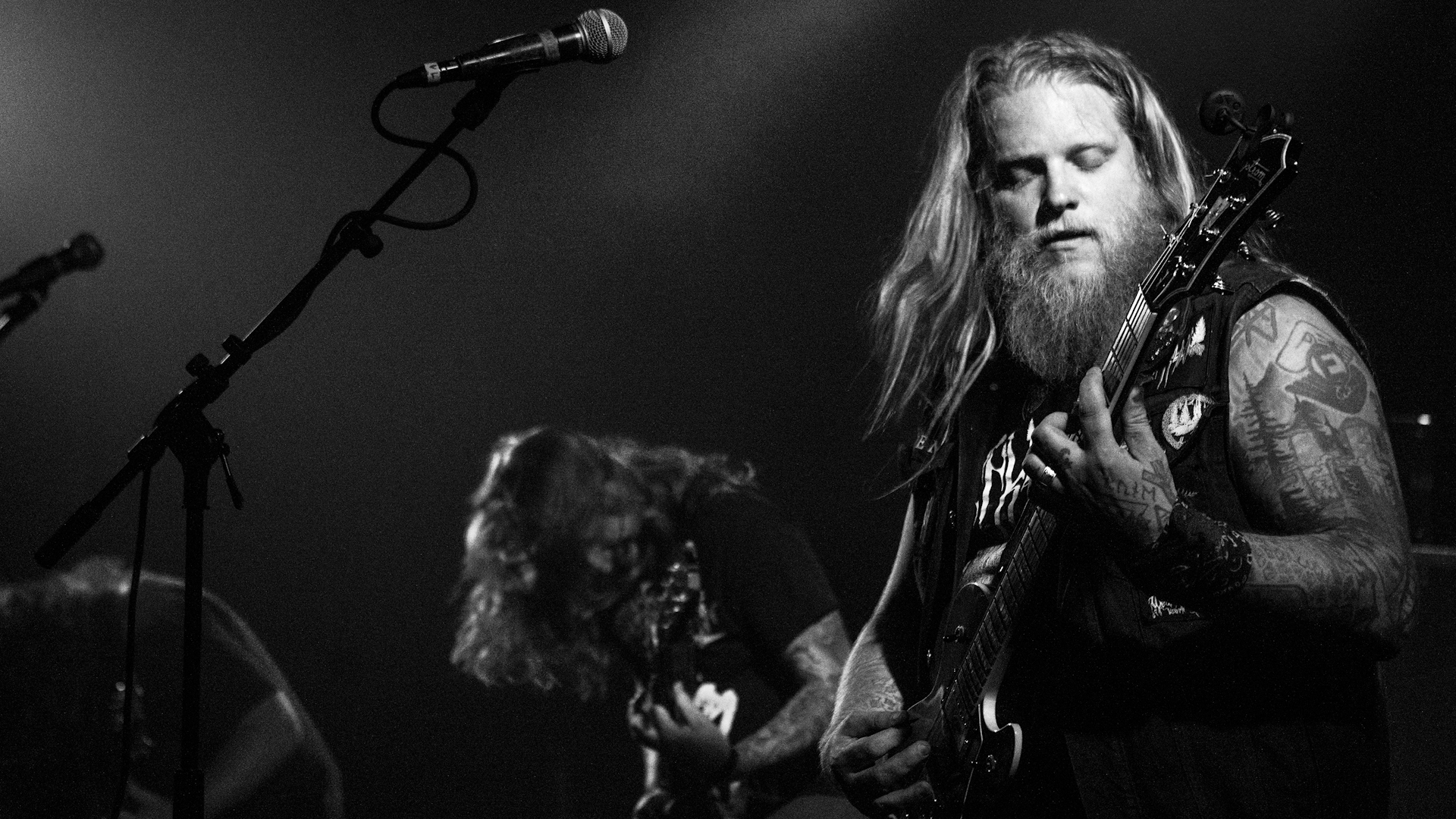
The film opens on Austin Lunn of Panopticon, M.S.W. of Hell and Emma Ruth Rundle describing explicitly and without artifice how expressing pain through music has helped buoy them, even save them at times, from allowing the darkness that bubbles up inside them from crippling them and their ability to take part in their world. This tone-setting exercise is appropriate and necessary; viewers looking for insight into the mechanics of creating this music will need to seek elsewhere. This documentary puts personalities, relationships and emotional journeys front and center, and provides context for the ways in which music manifests these artists’ personal heaviness and makes it somewhat more manageable, if only momentarily. Dimmitt clearly establishes this framework by placing the Couch Slut profile first in the queue. Vocalist Megan Osztrosits is an incisive communicator, and by giving her band point position in the lineup, Dimmitt is positioning underground metal saturated in personality right up front rather than burying it behind some of the acts here that receive more overall media attention.
The film flows smoothly between characters and through various locales, and it is so engrossing and well connected that it takes seeing the whole piece to notice that the documentary’s architecture is oddly shaped and maybe not wholly cohesive. This is hardly a knock against it; take it from a guy who tried to build a structure out of the USBM book’s 500 pages and barely managed to achieve something about as stable as a tower of toothpicks stuck end-to-end with hot glue. Editing these stories into a single 90ish-minute movie must have seemed nearly impossible, and Dimmitt’s attempt here is valiant enough – even enviable – to count as sticking the landing.
 After focusing on Bartlett’s origin story (and returning to him occasionally throughout to provide brilliant commentary and moments of levity), A Wandering Path wanders through band profiles in a not-quite-linear fashion. Much of the footage was shot at and around the 2018 Migration Fest, held at Mr. Smalls in Pittsburgh, PA, so that show appears to provide a loose framework for some of the stories, at times. Other times, Dimmitt hops from interview to interview across unknown time gaps, following the thematic throughline of the conversations he got on film. But it’s important to note that even when the documentary appears to shake and shimmy with an unstable foundation, the forward momentum holds viewers’ attention and continues to turn up golden moment after golden moment. Each speaker’s genuine love for all the others is palpable, affecting. That admiration binds the documentary together as well as any editing or musical continuity could.
After focusing on Bartlett’s origin story (and returning to him occasionally throughout to provide brilliant commentary and moments of levity), A Wandering Path wanders through band profiles in a not-quite-linear fashion. Much of the footage was shot at and around the 2018 Migration Fest, held at Mr. Smalls in Pittsburgh, PA, so that show appears to provide a loose framework for some of the stories, at times. Other times, Dimmitt hops from interview to interview across unknown time gaps, following the thematic throughline of the conversations he got on film. But it’s important to note that even when the documentary appears to shake and shimmy with an unstable foundation, the forward momentum holds viewers’ attention and continues to turn up golden moment after golden moment. Each speaker’s genuine love for all the others is palpable, affecting. That admiration binds the documentary together as well as any editing or musical continuity could.
About 40 minutes into my third viewing of the film, my 17-year-old son joined me, having just finished whichever book he had chosen to read that evening. He has zero native interest in heavy music, and my guess is that he was just settling in to a little dad time, and there was something on the screen to watch. But he stuck with it all the way through the end, and we had some great conversation afterward. At one point, within the last 20 minutes of A Wandering Path, he exclaimed to me: “Oh, I get it. I never liked that kind of ‘singing’ before, but it’s like, what other kind of voice would even work in music like this?” Later, he expressed that hearing the artists speak vulnerably about their art also gave him a way to appreciate what they were creating. There has always been a barrier to sharing with him this art that I love, and Michael Dimmitt’s massive vision and deft creative hand opened a crack in that wall and allowed us to connect over this music that means so much to me. To Bartlett and Dimmitt and the litany of talking heads in the film. And hopefully, to you, too. A Wandering Path is a beautifully shot movie that should be experienced by anyone with an interest in heart-rending heaviness… and maybe their loved ones could get something out of it, too.
Catch screenings of A Wandering Path: The Story of Gilead Media
Tuesday, May 2 (screening time 9:30 pm)
Nitehawk Cinema (Williamsburg location)
136 Metropolitan Ave
Brooklyn, NY, 11249
• Lev Weinstein (Krallice, Anicon, Geryon, Woe, Pyrolatrous)
Tuesday, May 9 (screening time 6:00 pm)





